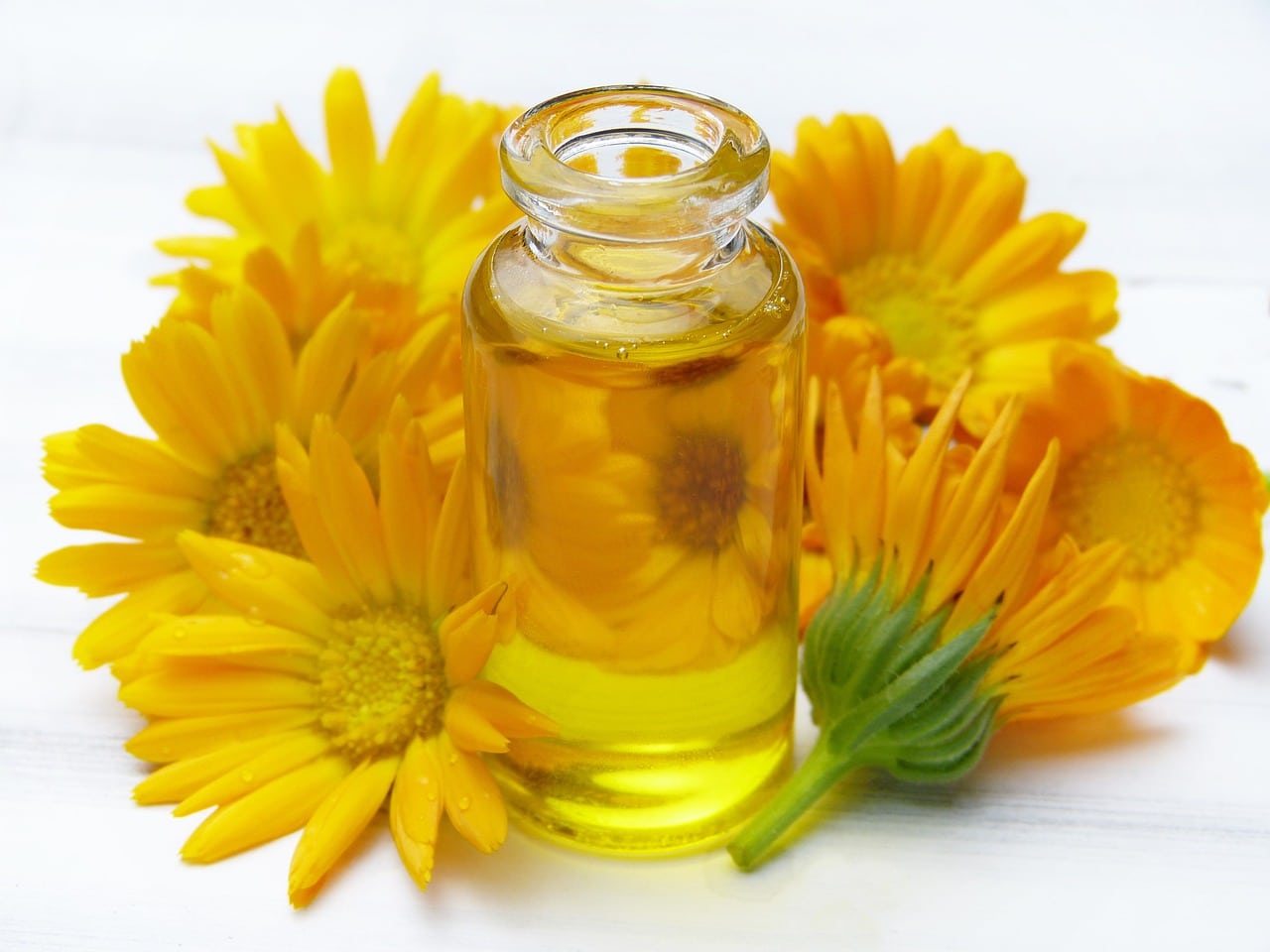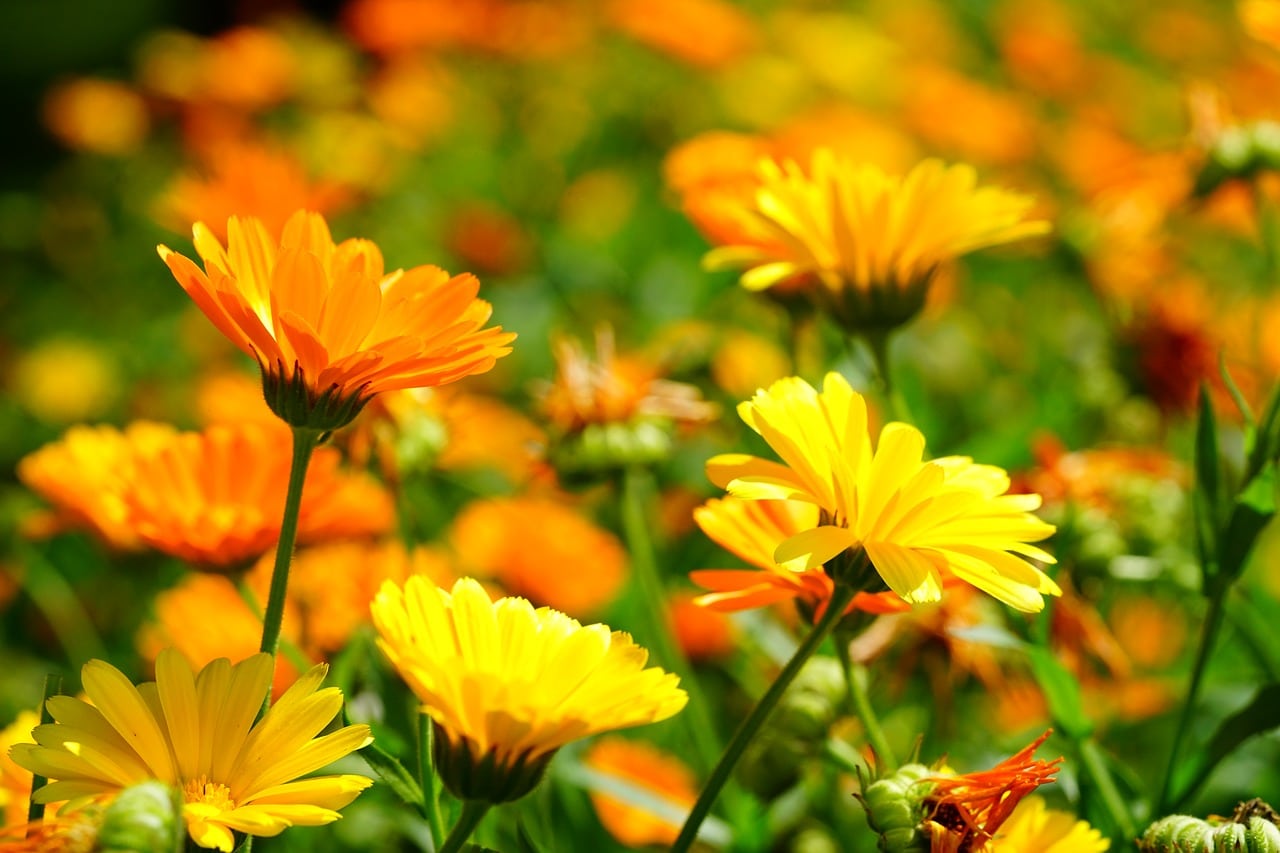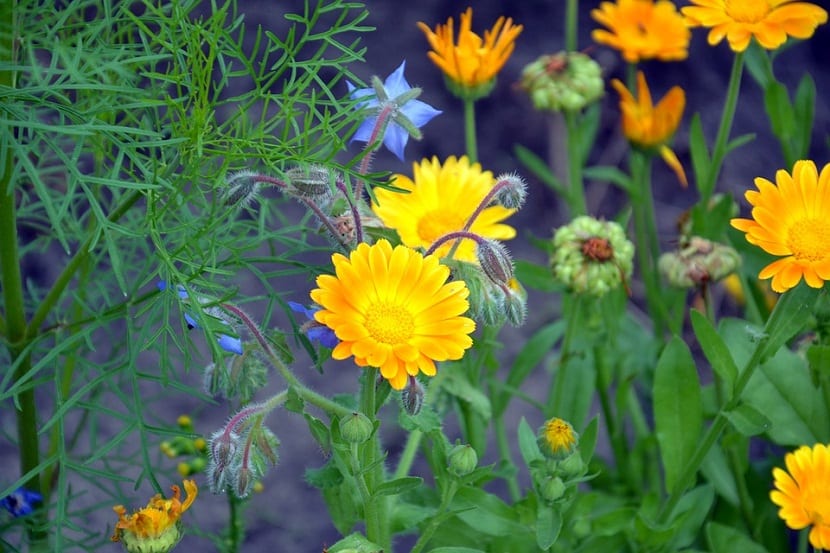
In ancient times, during the time of the pharaohs, there was a dominant plant in the plant kingdom of the Egyptian empire. It is known as calendula and was considered a wonder by the inhabitants of that great nation. And they were not exaggerating, because this herbaceous plant is not only beautiful, but also it also has many beneficial characteristics for both health and physical appearance. But what is calendula? What is it for?
In this article we will answer these questions and talk about the properties and benefits of calendula. Without a doubt it is a gift of nature that we are using for more and more purposes.
What is calendula and what is it for?

Before talking about the benefits of being a flower, we are going to explain what calendula is and what it is used for. The scientific name of this vegetable is Calendula officinalis and it belongs to the family Asteraceae. Other names that this beautiful flower receives are wonder, mercadela or buttercup.
This plant has certain biochemical components that give it very effective and proven powers to complement some therapies. Therefore, its main applications take place in the aesthetic world, since has impressive healing and antiseptic properties. In addition, they can also be used for medicinal purposes, as it also has powerful antiviral, digestive and anti-inflammatory properties.
There are many products in which calendula is present, of which there are different types and various purposes. Given the versatility of the buttercup, We can find this vegetable in creams and body milk, even for babies. Also in the field of beauty and personal hygiene it is a highly sought after vegetable. Therefore, it is not surprising to find it among the compositions of toothpastes, healing oils and soaps for sensitive skin. Since calendula also relieves ligament pain and helps improve muscle elasticity, it appears in many products designed for athletes.
However, the applications and advantages offered by calendula are not only focused on the world of hygiene and aesthetics, but also in the field of health. There are many medicinal properties it has. Next we will talk about all the benefits that this spectacular plant provides.
Medicinal properties
Now that we know what calendula is, we are going to comment a little on the properties and benefits that this flower provides. On a medicinal level, the buttercup offers the following advantages:
- Anti-inflammatory: Treatment of rubbing, minor burns and scalds. It has a great ability to reduce inflammation and recover the skin. It is also very often used in oral treatments for infections of the mouth and pharynx, such as mouth ulcers, tonsillitis, gingivitis and pharyngitis. The active ingredient in calendula is one of the main ingredients in mouthwashes used to relieve canker sores or gingival inflammation.
- Antiseptic: The buttercup has characteristics that stimulate dermal healing, since it favors the production of both glycoproteins and collagen. Also its fungicidal capacity is very useful to minimize the proliferation of bacteria in wounds, thus promoting healing. So it is not surprising that we find this plant in products to heal cracked feet and hands, or to treat fungal infections, such as athlete's foot or vaginal yeast infection.
- Digestive and menstrual: Calendula helps relieve spasms and improve circulation, thus reducing menstrual pain. It should also be noted that this plant facilitates the release of bile into the digestive tract, apart from having antiemetic effects. Therefore it is also used to appease gastritis and indigestion.
Calendula is even used at eye level. It is indicated in cases of eye fatigue and relieves redness of the eyes, which happens quite frequently today, for all the time we spend in front of screens. It is also used to treat eye inflammations and conjunctivitis, as it has antiviral and antibiotic properties.
Other benefits
This flower is also widely used in the aesthetic world. For example, there are several massage creams on the market that are made with calendula oil, as this helps to tone and relax both muscles and skin. As we have already mentioned, it is also used in baby products, as it turns out to be very soothing and softening, protecting and hydrating the skin.
Other cutaneous applications of this flower are found in all kinds of dermal creams. Helps heal minor skin inflammations, sunburns and irritations. What's more, helps to show off a perfect skin, fighting hives, abscesses, juvenile acne and eczema. It should be noted that it is also very effective in regenerating skin that is affected by allergies.
Where is calendula found?

We already know what calendula is and what it is for, but where can we find this plant? The buttercup It is native to the Mediterranean region and Asia Minor. However, today we can find this vegetable all over the world, in both private and public gardens.
Currently, it is very difficult to find calendula in the wild, if not to say that it is non-existent. Despite preferring clay soils, It can be grown in any type of soil, as long as it is in full sun. It is best to sow the seeds of this plant in mid-spring and once it is established, it is easily reseeded.

Herodotus, a famous historian, spoke about the ancient Egyptians' use of fresh and dried buttercup flowers. With the passage of time, the Greeks and Romans also began to use calendula, taking advantage of its medicinal properties. His legacy has reached today, where the applications of this flower are constantly increasing.
After finding out what calendula is and what its applications are, we can go looking at the supermarket how many products contain this wonderful flower, or even grow it ourselves. It is also an ideal flower to decorate our garden or home.
I live in Mendoza, Argentina, a town called Las Vegas at the foot of the Andes mountain range at 1840m above sea level, here the marigold grows wild, after snowfall, when spring comes the plants begin to sprout in the roads and embellish everything with their flowers!
Hello Silvia.
How nice to be able to live in a place like that. You must be able to enjoy a beautiful landscape.
... But we are not aware that there is any species of marigold native to America. They are all from the Mediterranean region and Asia Minor.
Perhaps there is a very similar one, yes. If you want send us a photo to our Facebook to see it, and so we tell you what it is.
Greetings.